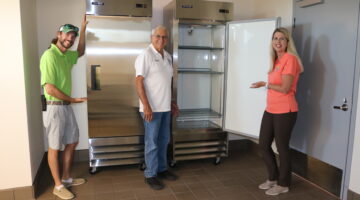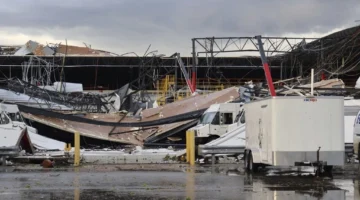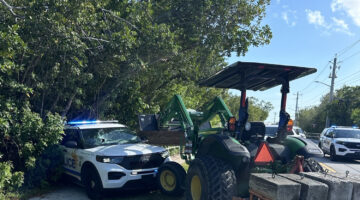NEARLY 2.2 MILLION CUBIC YARDS OF HURRICANE DEBRIS AND 18,854 DESTROYED WHITE GOODS HAVE BEEN REMOVED ALONG THE OVERSEAS HIGHWAY AND LOCAL ROADS IN THE FLORIDA KEYS
MONROE COUNTY – Since Category 4 Hurricane Irma struck on Sept. 10, 2017, more than 2.2 million cubic yards of hurricane debris – both vegetative and construction/demolition (C&D) – and more than 18,854 destroyed white goods (large appliances) have been removed along roads throughout the Florida Keys.
The collection of hurricane debris continues along U.S. 1 (the Overseas Highway) and on County and private roads from Mile Marker 16 to 40 in the Keys, and along roads on Duck Key, Conch Key and the City of Layton.
The breakdown to date:
Unincorporated Monroe County (along County and private roads) and along City of Layton municipal roads: 1,277,750 cubic yards of hurricane debris and more than 8,456 white goods. The County’s contractors collected 808,846 cubic yards and 6,412 white goods of this total and Florida Department of Transportation’s contractors collected 468,904 cubic yards and 2044 white goods. Note: In the hardest hit area between MM 16 and 40, County and FDOT contractors have combined to collect 799,620 cubic yards of hurricane debris and 3,176 white goods.
Along U.S. 1: 256,404 cubic yards of hurricane debris and about 1,000 white goods. This was collected by Florida Department of Transportation’s contractors.
City of Marathon municipal and private roads: 286,106 cubic yards of hurricane debris and 7,409 white goods. This was collected by the City of Marathon’s contractor.
Village of Islamorada municipal roads, as well as final collection along U.S. 1 in city limits: 214,146 cubic yards of debris and 1680 white goods. This was collected by the Village of Islamorada’s contractor.
City of Key West roads: 146,688 cubic yards of hurricane debris and 309 white goods.
TOTALS FOR THE KEYS TO DATE: 2,181,094 cubic yards of hurricane debris and 17,467 white goods.
HAULOUT: All of this collected hurricane debris was taken to debris management sites in the Keys, where it is ground or mulched to make smaller for haul out to the mainland for proper disposal. Some of the vegetative debris was burned in the Keys. All white goods have their Freon removed and are hauled to the mainland for recycling and proper disposal.
WHAT’S LEFT TO COLLECT:
- The Florida Department of Transportation’s debris contractor is conducting a final pass along U.S. 1 in the Keys and agreed to a deadline of mid-January to complete the collection. It is now illegal to dump any hurricane debris in the U.S. 1 right of way.
- In unincorporated Monroe County, final pass on County roads is almost complete on Duck Key. As soon as crews finish Duck Key, they will move to complete the final pass on Conch Key and for the City of Layton, which entered into an agreement with the County to handle its hurricane debris removal on municipal roads.
- In unincorporated Monroe County, from Mile Marker 16 to 40, collection continues along County roads by its debris contractor. County public works also continues to collect hurricane debris along private roads and take it to the nearest County right of way for collection by the debris contractor.
No County or private roads in the MM 16 to 40 area has received a final collection pass. If you now have debris in the rights of way of County or private roads, it will get picked up.
NOTE: If you live in the Mile Marker 16 to 40 area and have eligible hurricane debris remaining in your yard, please place it on the nearest County right of way. This is important to expedite the cleanup and ensure all eligible hurricane debris is picked up.
For residents in the areas of the Keys where hurricane debris collection has concluded, hurricane debris can be taken to one of the County or municipal transfer stations for disposal, or put what fits into their regular solid waste or yard waste bins for collection by their regular haulers.
[livemarket market_name="KONK Life LiveMarket" limit=3 category=“” show_signup=0 show_more=0]



No Comment